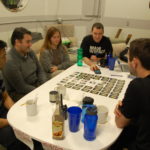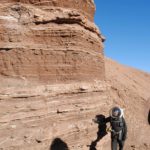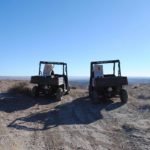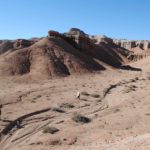Crew 186 Operations Report 07JAN2018
SOL: 07
Name of person filing report: M. Grande
Non-nominal systems: None
Notes on non-nominal systems: Generator system limping along with a now-nominal routine.
Generator (hours run): 17h
Generator turned off, charging battery at 8:45am
Generator turned on at 5:40pm
Solar— SOC
@ 8:45am : 87%
@ 5:40pm : 55%
Diesel: 52%
Propane: 31%
Ethanol Free Gasoline (5 Gallon containers for ATV): 8.65 Gallons
Water (trailer): 10 Gallons
Water (static): 180 Gallons
Trailer to Static Pump used: No
Water (loft) – Static to Loft Pump used: Yes
Water Meter: 129182.6 Gallons
Toilet tank emptied: No
ATVs Used: None
Oil Added? No
ATV Fuel Used: 00 Gallons
# Hours the ATVs were used today: 00:00 hours
Notes on ATVs: None
Deimos rover used: Yes
Hours: 98.4
Beginning charge: 100%
Ending charge: 87%
Currently charging: Yes
Sojourner rover used: Assigned to director only.
Hours: 5.2
Beginning charge: 98%
Ending charge:
Currently charging: No
Spirit rover used: Yes
Hours: 10.2
Beginning charge: 100%
Ending charge: 63%
Currently charging: Yes
Opportunity rover used: No
Hours: 4.9
Beginning charge:
Ending charge:
Currently charging: No
Curiosity rover used: No
Hours: 3.1
Beginning charge: 100%
Ending charge:
Currently charging: No
HabCar used and why, where? No
General notes and comments: Our Journalist and Navigation Officer, Justin, did a wonderful job taking over some of the engineering duties for me today! He switched the generator on this morning while I was preparing a hearty oatmeal breakfast for the crew, and he turned it back on again in the evening as I was essentially passing out into a nap following our strenuous EVA! Many thanks to him! The solar power system was run a tad too long and did drop below 60% (to 55%) when the generator was turned back on, which is my fault for not watching it closely enough! My apologies. Boy, does the solar battery SOC deplete rapidly in the late afternoon!
Justin also did a fantastic job as HabCom today! HabCom and the crew have been helping me each EVA by recording the beginning and ending rover hours and battery state of charge.
Something I have been a little vexed by, however, is the Potable Water Meter. I have been tracking our water usage as the crew attempts to be frugal with water, and I write down the number of gallons indicated on the side of the loft tank each time I fill it, as well as the water meter reading early each morning. According to the loft tank readings, we use around 30-35 G per day, maximum 39 G. Quite to the contrary, the potable water meter says some days that we use about 40 G (not too far off) and some days (like Sol 04 and Sol 06) that we used 50-60 G. I’m really not sure where this discrepancy is coming from, and it makes it really hard to give an accurate number for what is left in the static tank. It’s also hard to give the crew feedback about our water-saving measures.
Summary of internet: All nominal
Summary of suits and radios: All nominal
Summary of Hab operations: All nominal
Summary of GreenHab operations: All nominal
Summary of ScienceDome operations: All nominal
Summary of RAM operations: Not Operational
Summary of health and safety issues: Crew is Healthy
Questions, concerns and requests to Mission Support: Water and propane are both in need of a refill, please! Additionally, I would love some feedback and support on the potable water meter.







You must be logged in to post a comment.